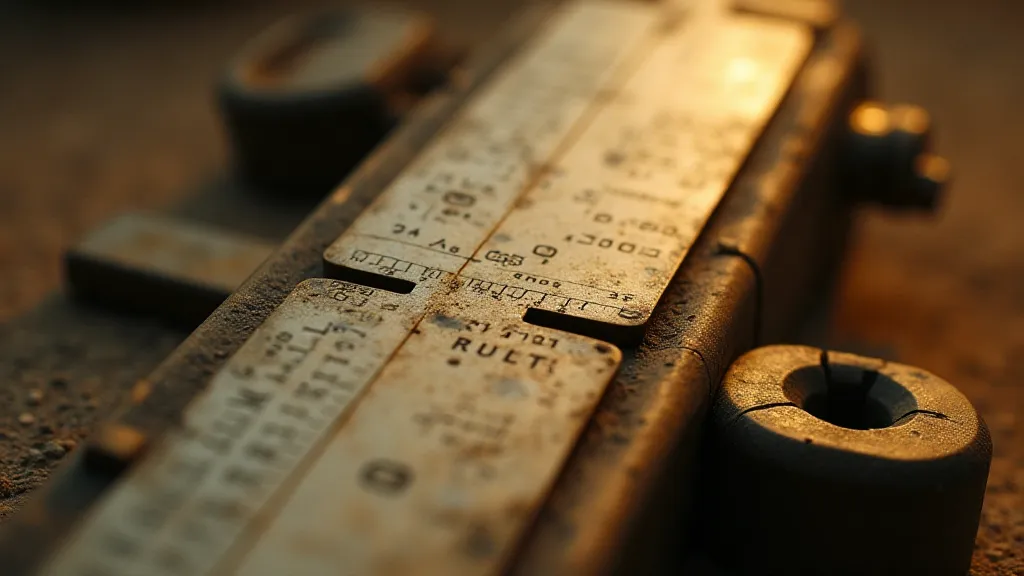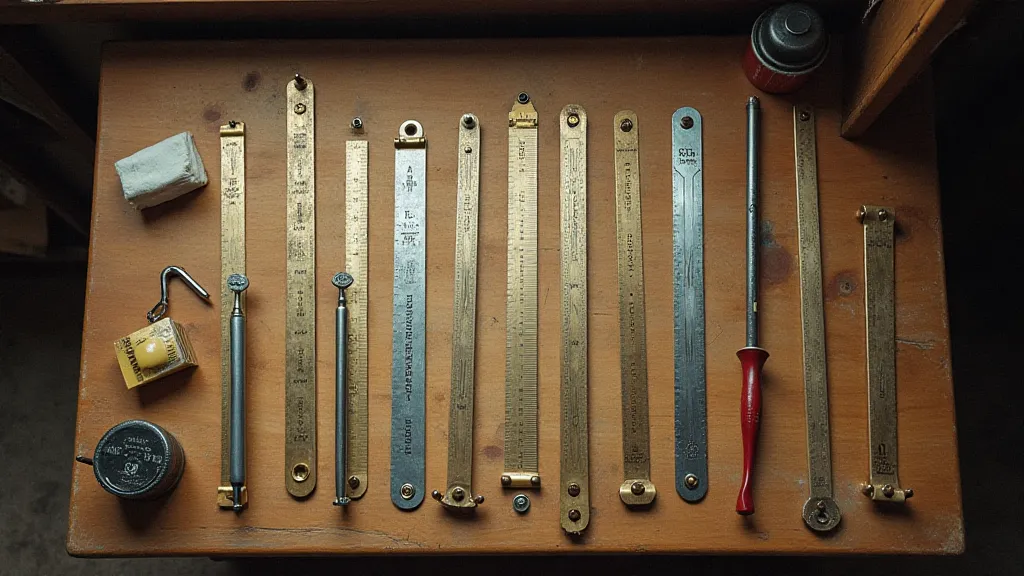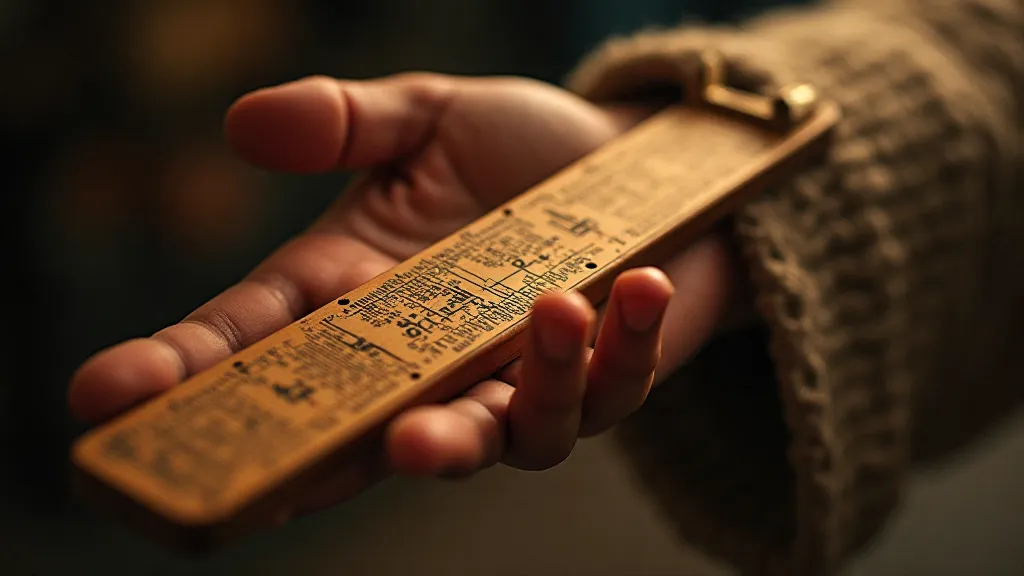The Measure of Ingenuity: Slide Rules and the Birth of Modern Computing
There's a quiet dignity to old tools. A sense of purpose lingering in the worn edges, the faint scent of oil and metal. My grandfather, a civil engineer, kept a collection of slide rules in his workshop – a legacy passed down to me, not just of instruments, but of a unique and ingenious way of thinking. They weren’t just calculators; they were extensions of the mind, demanding a level of understanding that modern technology often obscures. They represented an era where human ingenuity, combined with meticulously crafted mechanics, solved complex problems. These aren’t just “antique tools” to me; they're windows into a fascinating chapter of scientific and engineering history – a history intimately linked to the very birth of computing.

The Analog Age of Calculation
Before the digital revolution, before even the humble electronic calculator, engineers, scientists, and mathematicians relied on the slide rule. Conceived in the 16th century, with significant refinement by William Oughtred in the 17th, the slide rule wasn't a calculator in the modern sense. It didn't perform calculations itself; instead, it provided a visual representation of multiplication and division using logarithmic scales. Understanding the underlying logarithmic principle unlocks the slide rule’s power – a testament to the elegant link between mathematics and mechanics.
Imagine a world without instant answers. Every complex calculation – designing a bridge, determining trajectory, or navigating a ship – required deliberate, conscious effort. The slide rule fostered a deep understanding of numbers and the relationships between them. It wasn’t enough to simply "push buttons." You had to comprehend the principles guiding each step, to actively engage with the mathematics. This active engagement, I believe, is a key differentiator between calculating *with* a slide rule and simply using a machine to produce a number.
A Complementary Relationship: Slide Rules and Early Computers
The development of electronic computers didn't render the slide rule obsolete overnight. Quite the contrary. For many years, they coexisted, complementing each other beautifully. Early computers were often unreliable, expensive, and required specialist knowledge to operate. Slide rules remained the workhorses for everyday calculations, particularly in fields like civil engineering, architecture, and surveying, where portability and immediate results were essential. Many engineers learned to use slide rules *before* they ever touched a mainframe computer.
Consider the Apollo Guidance Computer (AGC), the onboard computer that guided the Apollo missions to the moon. While a marvel of electronic engineering, its development team relied heavily on slide rules for verifying its calculations and designing its algorithms. Even as computers took over increasingly complex tasks, slide rules remained a crucial tool for checking results, performing quick estimations, and understanding the fundamentals.
The Craftsmanship of Precision
Holding a vintage slide rule – particularly one from a respected brand like Pickett, Faber, or Polaro – is a tangible connection to a lost art. The craftsmanship is astonishing. The scales, painstakingly etched or printed, are a testament to incredible precision. The bodies, often made of durable materials like mahogany, bakelite, or aluminum, were built to last a lifetime – and many have. The feel of the moving parts, the satisfying click as the scales aligned – these are tactile experiences that modern devices can't replicate.
Restoring a slide rule isn't just about cleaning it; it’s about preserving a piece of history. It's a delicate process requiring patience, careful cleaning, and sometimes, very specific lubricants to ensure smooth operation. A truly well-restored slide rule isn’t merely functional; it’s a beautiful object, a testament to the ingenuity of its creators and the skill of the restorer. The challenge lies in bringing it back to life without erasing the character and patina of age – the very marks that tell its story.

More Than Just a Tool: Cultivating a Way of Thinking
In our digital age, it’s easy to dismiss the slide rule as a relic of the past. But I believe it offers something invaluable: a pathway to a deeper understanding of mathematics and a renewed appreciation for the power of human ingenuity. Learning to use a slide rule isn't just about mastering a skill; it's about cultivating a way of thinking – a methodical, analytical approach to problem-solving. It forced you to understand *why* a calculation worked, not just what the answer was.
The inherent limitations of the slide rule – its reliance on manual dexterity and its inability to handle complex functions directly – fostered creativity and resourcefulness. Engineers learned to develop clever workarounds, to break down complex problems into manageable steps. This ability to adapt and innovate is a skill that remains highly relevant, regardless of the tools at your disposal.
Collecting and Preservation: A Legacy for the Future
Collecting vintage slide rules isn't simply about acquiring objects; it's about safeguarding a crucial part of our technological heritage. There’s a fascinating world of slide rule variants, each with its own unique features and history. From the ubiquitous Model 10 to the specialized naval and artillery rules, each tells a story about the industries and the people who relied on them.
Preserving these instruments requires a commitment to understanding their construction and functionality. It means appreciating the delicate balance of precision and artistry that went into their creation. And it means sharing that appreciation with others, inspiring a new generation to explore the fascinating world of analog calculation. A well-maintained slide rule isn’t just a piece of engineering history; it’s a potential source of inspiration, a tangible link to a bygone era of innovation, and a testament to the enduring power of human intellect.






